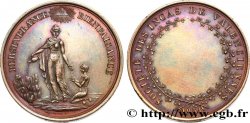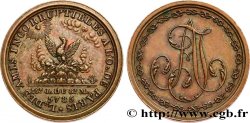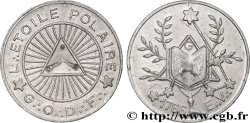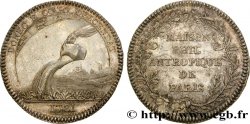E-auction 86-44191 - fjt_339276 - FRANC-MAÇONNERIE - PARIS MAISON PHILANTROPIQUE DE PARIS 1781
Sie müssen angeschlossen sein und von cgb.fr genehmigt werden, um in einer E-Auktion teilzunehmen.Melden Sie sich an, um zu wetten..Die Kontobestätigungen sind innerhalb von 48 Stunden nach Ihrer Anmeldung gemacht.Warten Sie nicht bis die letzten zwei Tage vor dem Abschluss eines Verkaufs, um Ihre Registrierung abzuschließen. Klickend "BIETEN" verpflichten Sie sich vertraglich, diesen Artikel zu kaufen und Sie nehmen ohne Reserve die allgemeinen Verkaufsbedingungen für den e-auctions zu cgb.fr an.
Der Verkauf wird an der Zeit auf der Übersichtsseite angezeigt geschlossen werden. Angebote, die nach der Schließung Zeit empfangen sind, werden nicht gültig.
Bitte beachten Sie, dass die Fristen für die Einreichung Ihres Angebots auf unsere Server können variieren und es kann zur Ablehnung Ihres Angebots entstehen, wenn es in den letzten Sekunden des Verkaufs gesendet wird. Die Angebote sollen mit ganzer Zahl ausgeführt sein, Sie können Kommas oder des Punktes in Ihrem Angebot nicht erfassen. Bei Fragen klicken Sie hier, um einen Blick auf die FAQ E-Auktionen.
KEINE ANSCHAFFUNGSKOSTEN FÜR DIE KÄUFER.
KEINE ANSCHAFFUNGSKOSTEN FÜR DIE KÄUFER.
| Schätzung : | 48 € |
| Preis : | 24 € |
| Höchstgebot : | 29 € |
| Verkaufsende : | 08 Dezember 2014 19:07:30 |
| Bieter : | 7 Bieter |
Type : MAISON PHILANTROPIQUE DE PARIS
Datum: 1781
Metall : Silber
Durchmesser : 30 mm
Stempelstellung : 6 h.
Rand cannelée
N° im Nachschlagewerk :
Vorderseite
Titulatur der Vorderseite DONEC A COELO DESCENDAT ; À L'EXERGUE : 1781.
Beschreibung Vorderseite Une main tenant un arrosoir sous le zodiaque; dans le paysage, un chateau fort, deux calvaires et un clocher au milieu des champs.
Übersetzung der Vorderseite Jusqu'à ce qu'elle descende du Ciel.
Rückseite
Titulatur der Rückseite MAISON PHILANTROPIQUE DE PARIS.
Beschreibung Rückseite en cinq lignes dans une couronne de feuillage.
Kommentare
Sans être directement affiliée, cette société de bienfaisance partageait l’esprit de la maçonnerie et était le bras caritatif du Grand Orient de France. On trouve un document les concernant en ligne sur gallica avec le Plan d'établissemens à former sous la direction de la maison philantropique de Paris, pour élever les enfans trouvés, sans leur donner de nourrices... : discours lu au comité de la maison, le 1er décembre 1789 par M. le chevalier de Gestas.
La franc-maçonnerie s’implante en France aux alentours du premier quart du XVIIIe s. sous l’influence d’aristocrates anglais. Initiatique, elle est fondée sur le rite hiramique, du nom d’Hiram de Tyr, personnage biblique, architecte du roi Salomon sur le chantier du Temple et qui a résisté à la torture sans livrer ses secrets. Hiram a aussi donné un point de départ du calendrier maçonnique commençant 4000 ans avant le calendrier chrétien. Les symboles servent de signes de reconnaissance entre les initiés, notamment des outils de constructeur de cathédrales (équerre, compas, niveau, maillet, etc.), des formes (triangle, étoile), des nombres (trois, cinq, sept) et des lettres.
Without being directly affiliated, this charitable society shared the spirit of Freemasonry and was the charitable arm of the Grand Orient of France. A document about them can be found online on Gallica with the Plan of establishments to be formed under the direction of the philanthropic house of Paris, to raise foundlings, without giving them wet nurses...: speech read to the committee of the house, on December 1, 1789 by Mr. the Chevalier de Gestas. Freemasonry took root in France around the first quarter of the 18th century under the influence of English aristocrats. Initiatory, it is based on the Hiramic rite, named after Hiram of Tyre, a biblical figure, architect of King Solomon on the construction site of the Temple and who resisted torture without revealing his secrets. Hiram also gave a starting point for the Masonic calendar beginning 4000 years before the Christian calendar. Symbols serve as signs of recognition between initiates, including cathedral builder's tools (square, compass, level, mallet, etc.), shapes (triangle, star), numbers (three, five, seven) and letters
La franc-maçonnerie s’implante en France aux alentours du premier quart du XVIIIe s. sous l’influence d’aristocrates anglais. Initiatique, elle est fondée sur le rite hiramique, du nom d’Hiram de Tyr, personnage biblique, architecte du roi Salomon sur le chantier du Temple et qui a résisté à la torture sans livrer ses secrets. Hiram a aussi donné un point de départ du calendrier maçonnique commençant 4000 ans avant le calendrier chrétien. Les symboles servent de signes de reconnaissance entre les initiés, notamment des outils de constructeur de cathédrales (équerre, compas, niveau, maillet, etc.), des formes (triangle, étoile), des nombres (trois, cinq, sept) et des lettres.
Without being directly affiliated, this charitable society shared the spirit of Freemasonry and was the charitable arm of the Grand Orient of France. A document about them can be found online on Gallica with the Plan of establishments to be formed under the direction of the philanthropic house of Paris, to raise foundlings, without giving them wet nurses...: speech read to the committee of the house, on December 1, 1789 by Mr. the Chevalier de Gestas. Freemasonry took root in France around the first quarter of the 18th century under the influence of English aristocrats. Initiatory, it is based on the Hiramic rite, named after Hiram of Tyre, a biblical figure, architect of King Solomon on the construction site of the Temple and who resisted torture without revealing his secrets. Hiram also gave a starting point for the Masonic calendar beginning 4000 years before the Christian calendar. Symbols serve as signs of recognition between initiates, including cathedral builder's tools (square, compass, level, mallet, etc.), shapes (triangle, star), numbers (three, five, seven) and letters








 Berichten über einen Fehler
Berichten über einen Fehler Die Seite drucken
Die Seite drucken Teilen meiner Auswahl
Teilen meiner Auswahl Stellen Sie eine Frage
Stellen Sie eine Frage Einlieferung/Verkauf
Einlieferung/Verkauf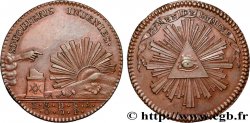
 Details
Details

